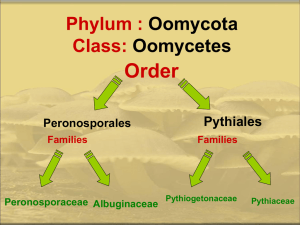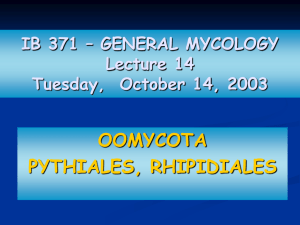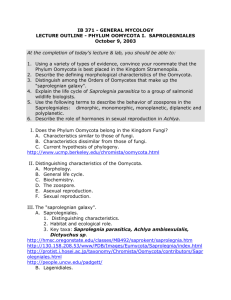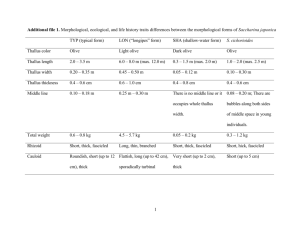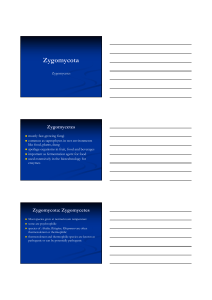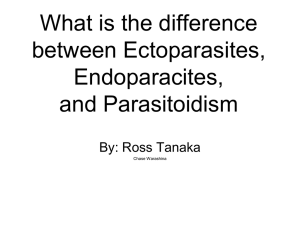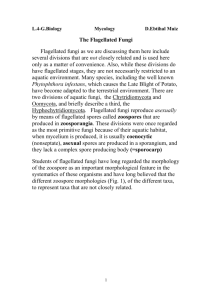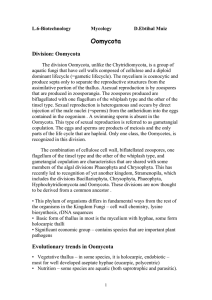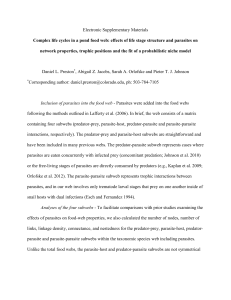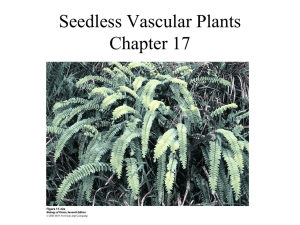Document
advertisement
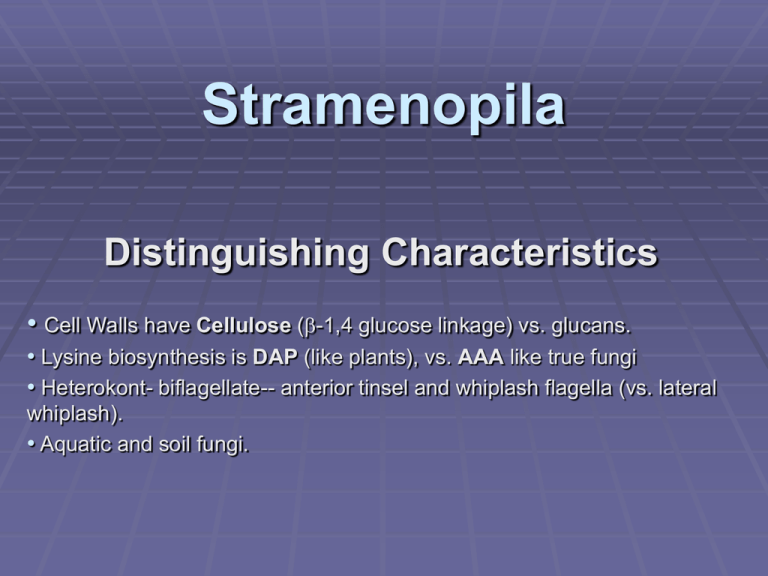
Stramenopila Distinguishing Characteristics • Cell Walls have Cellulose (-1,4 glucose linkage) vs. glucans. • Lysine biosynthesis is DAP (like plants), vs. AAA like true fungi • Heterokont- biflagellate-- anterior tinsel and whiplash flagella (vs. lateral whiplash). • Aquatic and soil fungi. Stramenopila Other Characteristics Motile spores formed in a sporangium Sexual reproduction by gametangial contact Diploid through most of the life cycle Somatic structures are unicellular and holocarpic, or rhizoidal, or coenocytic. The Hyphochitryomycota Anterior tinsel flagellum Aquatic habitat Some parasites (on algae and fungi), others saprobes Thallus is holocarpic or eucarpic Holocarpic species are endobiotic Eucarpic species may be mono- or polycentric Zoosporangia are inoperculate, zoospore release is through a discharge tube Eg. Rhizidiomyces apophysatus The Oomycota Zoospore biflagellate, heterokont—posterior facing whiplash, anterior facing tinsel (emerge adjacent) Sexual Reproduction by gametangial contact Oogamous—two different types of gametangia, contact, contents of one flow into the other Oospore is the sexual spore--thick walled resting spore Meiosis occurs in gametangium Haplobiontic (only diploid thallus, no haploid thallus) Some are holocarpic, no mycelium Some are eucarpic, but monocentric with rhizoids Some produce extensive mycelia with coenocytic hyphae Oomycota (5 orders, 65 genera, 500-800 species)—two we will discuss: Peronosporales Saprolegniales Saprolegniales long terminal sporangia with more than one egg per oogonium “Water molds” occur abundantly in clean water. Mostly saprobes but a few parasites (Saprolegnia parasitica) causes diseases of fish and fish eggs. Most are hermaphroditic and homothallic (self-fertile). May be mono- or dimorphic (two spore forms) Eg. Saprolegnia Sexual Reproduction in the Oomycota Eg. #2 Achlya bisexualis Very similar asexual phase Unique sexual phase Studied by John Raper in the 40’s and 50’s demonstrating a complex hormone system involved in sexual development Hormone A B C D Source Female somatic thallus Male thallus w anther init. Oogonial initials Antheridia Function Induces antheridial branches Induces formation of oogonial initials Attracts anther branches Oogonium & oospere differentiation Achlya Peronsporales oval-lemon shaped zoosporangia with one oosphere per oogonium Well developed coenocytic mycelium Most advanced and specialized order of the Oomycota All members are monomorphic (one type of zoospore) Three Families- distinguished by the structures that bear sporangia Families in the Peronosporaceae Pythiaceae- sporangia directly borne on vegetative hyphae. These fungi are saprophytes or facultative parasites (very destructive) Peronsoporaceae- sporangia borne on branched, determinate sporangiophores (protrude through stomates). Obligate parasites called the “Downy Mildews” Albuginaceae- chains of sporangia on club shaped sporangiophores that rupture host epidermis to form a white crust on leaf surface. Obligate parasites called “White Rusts”. Ex. Pythium Debaryanum Pythium Asexual Zoosporangia Pythium Sexual Reproduction Pythium Oospores ‘Damping Off’ (Pythium) Phytophthora Phytophthora- a devastating facultative parasite Zoospore Release in Phytophthora sojae Quic kT ime™ and a Sorens on Video dec ompres sor are needed to see thi s pic ture. Peronosporaceae- the ‘Downy Mildews’ Obligate parasites Branched, determinate sporangiophores Sporangiophores protrude through host stomates Ex. Plasmopora viticola (Peronosporaceae) Downy Mildew on Grape Albuginaceae- the ‘White Rusts’ Obligate parasites Club shaped sporangiophores (inside host leaf) Sporangia rupture leaf epidermis and appear as a white crust Ex. Albugo cadida (Albuginaceae)
